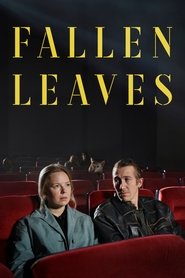Capitalism: A Love Story.
It has always distressed me to hear critics speak of Kaurismäki's deadpan characters as losers, sad sacks, robots, autistic or emotionally immature—as if these were pathetic freaks for us to sneer at. These characters know exactly what they are doing. Their Buster Keatonesque stoneface and terse, laconic manner of speaking comprise the armor with which they face the world, along with their idiosyncratic clothing and hairstyles. [But] does [Kaurismäki's repeated character] catalogue remind you of anyone else—a filmmaker who rotated a few formal and thematic elements like a kaleidoscope to present a potentially endless series of works about ordinary lives that were at once contemporary and timeless, familiar and strange? Is it foolish to compare Kaurismäki to one of the world's best-loved filmmakers, Yasujirõ Ozu?[…]
A more unlikely but more useful signpost [than the Bresson poster] is the poster for David Lean's Brief Encounter (1945), [another] two-hander of encroaching middle age, social restriction and repressed emotions. Lean's characters belong to a higher social class than Kaurismäki's proletarians. They, too, nevertheless, are hindered by social mores from acting on their real emotions. […] Laura's attempted suicide in Brief Encounter is represented solely by light, shadow and sound effects. Kaurismäki borrows this sequence for his own cataclysm, when, delirious with happiness that Ansa has accepted him back, Holappa races unintentionally into an off-screen tram and falls into a coma.
— Darragh O'Donoghue (Cineaste Magazine)

